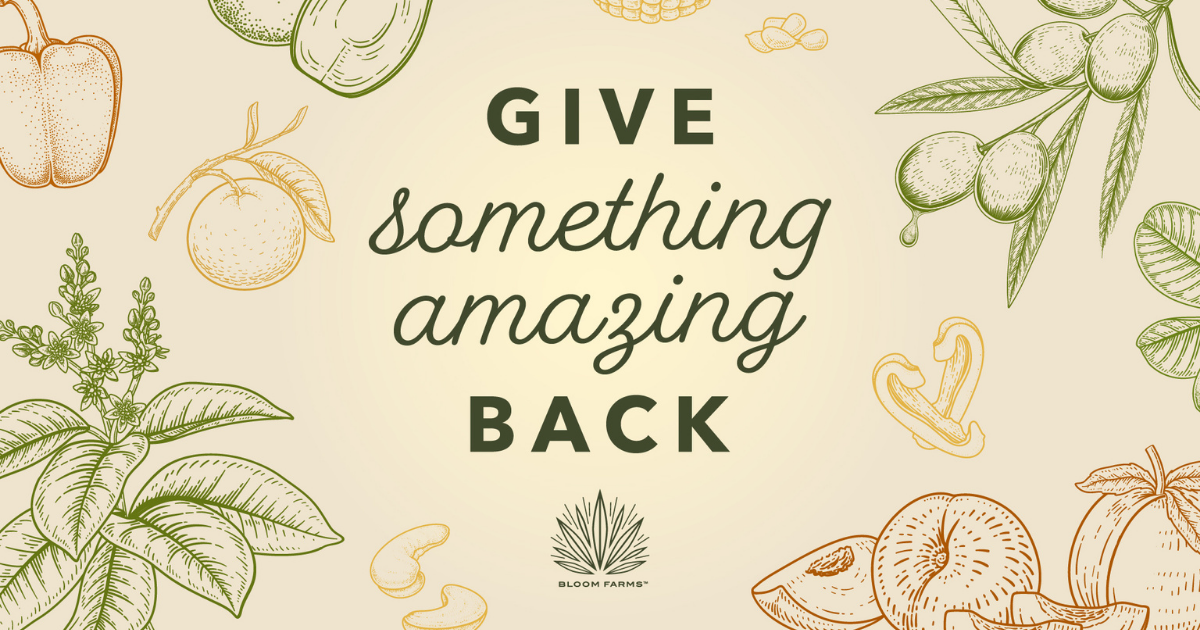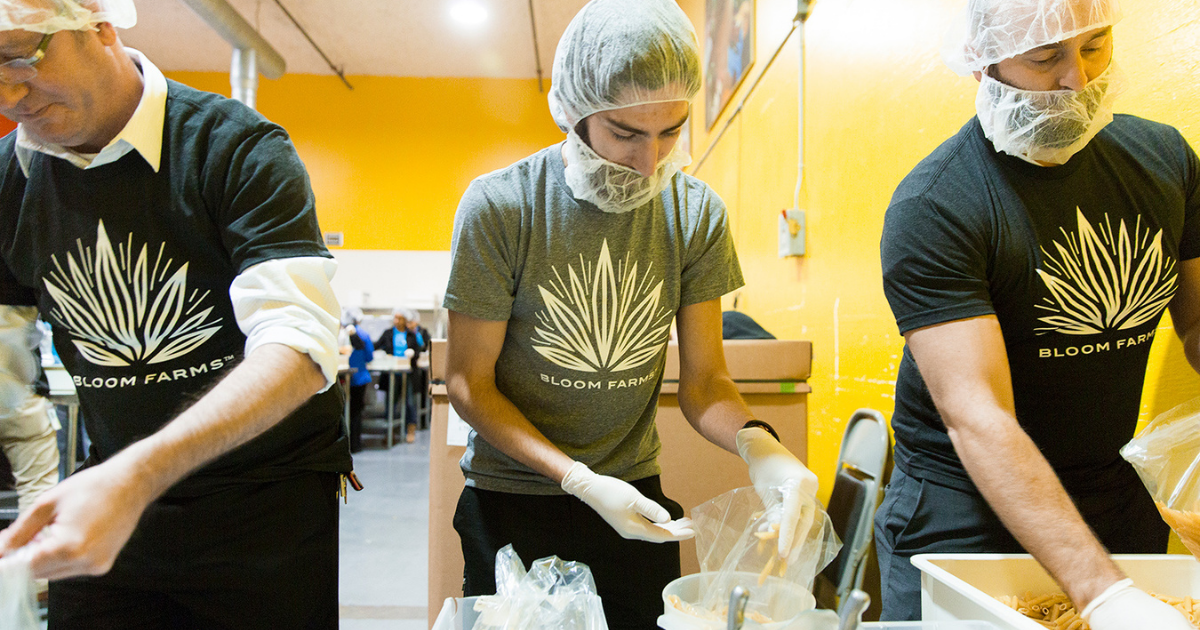Bloom Farms: 3 Million Meals to Help End Hunger
From October 16 through November 3, Bloom Farms is pledging to donate three meals for every Bloom Farms product sold.
From October 16 through November 3, Bloom Farms is pledging to donate three meals for every Bloom Farms product sold.
Since 2015, Bloom Farms has been on a mission to help end hunger. In California and beyond, they’ve donated over 3 million meals through their one-for-one program—and they’re just getting started.
To mark this milestone and honor the food banks on the front lines of hunger, we’re partnering with Bloom Farms to help kick off three weeks of 3X meal donations on World Food Day.

About Bloom Farms
“Give something amazing back.”
This core value has been the heart of Blooms Farms' 1-for-1 program since day one. For every Bloom Farms product sold, they donate a healthy meal to someone in need.
Bloom Farms is proud to share that this combined effort of customers, food banks, retail partners and Bloom Farmers past and present has now served more than 3 million meals.
As we pause to celebrate this milestone and honor the food banks on the front lines of hunger, Bloom Farms envisions a greater impact and renews their commitment to this 1-for-1 initiative. Next stop: 5 million meals.

What Hunger Can Look Like
- Food Insecurity: a lack of consistent access to enough food for everyone in a household to live a healthy, active lifestyle.
- Food Crisis: a sharp increase in hunger and malnutrition, usually related to a shock in supply or demand.
- Food Desert: a geographical area where people have limited access to a variety of healthy and affordable food.
Factors to Consider
- Economics: Food insecurity can be ongoing due to poverty or related to temporary economic instability, such as a layoff, medical debt or unemployment.
- Neighborhood: Many rural and low-income areas have limited access to fresh, healthy food, so residents may be more likely to opt for less nutritious convenience foods.
- Waste: Each year, 30-40% of food (80 million pounds) in the United States is lost to waste. USDA’s Food Waste Challenge aims to halve this by 2030.
Risks of Food Insecurity
While our country is often portrayed as the land of opportunity and excess, the United States also is home to a staggering hunger problem, which has only been exacerbated by the COVID-19 pandemic.
As we rally around the #ZeroHunger mission of World Food Day, let’s work together to improve access to nutritious food, reduce food waste and address hunger head-on in our local communities.

How to Get Involved
Every time you buy or recommend a Bloom Farms product, a meal reaches someone in need. Food banks make great use of direct donations by being highly efficient. It’s also easy and gratifying to volunteer at a local food pantry such as the San Diego Food Bank, North County Food Bank and Imperial Valley Food Bank.

Footnotes
- FAO, IFAD, UNICEF, WFP and WHO, “The State of Food Security and Nutrition in the World 2020”, Food and Agriculture Organization of the UN, Rome, Italy, FAO, IFAD, UNICEF, WFP and WHO, 2020, http://www.fao.org/documents/card/en/c/ca9692en, (accessed 1 June 2021).
- World Food Programme, “2021 Global Report on Food Crises”, World Food Programme, 2021, https://www.wfp.org/publications/global-report-food-crises-2021, (accessed 1 June 2021).
- World Health Organization, “As more go hungry and malnutrition persists, achieving Zero Hunger by 2030 in doubt, UN report warns”, 2021, World Health Organization, https://www.who.int/news/item/13-07-2020-as-more-go-hungry-and-malnutrition-persists-achieving-zero-hunger-by-2030-in-doubt-u n-report-warns, (accessed 1 June 2021).
- Feeding America, “Map the Meal Gap Data”, Feeding America, 2020, https://www.feedingamerica.org/research/map-the-meal-gap/by-county, (accessed 1 June 2021).
- Feeding America, “What is Food Insecurity?”, Feeding America, https://www.feedingamerica.org/hunger-in-america/food-insecurity, (accessed 1 June 2021).
- C Peter Timmer, “Preventing food crises using a food policy approach”, Pub Med, https://pubmed.ncbi.nlm.nih.gov/19923388/, (accessed 1 June 2021).
- Paula Dutko, Michele Ver Ploeg, Tracey Farrigan, “Statistics and Influential Factors of Food Deserts”, https://www.ers.usda.gov/webdocs/publications/45014/30940_err140.pdf, United States Department of Agriculture, 2012, (accessed 1 June 2021).
- USDA, “Food Waste FAQs”, United States Department of Agriculture, https://www.usda.gov/foodwaste/faqs, (accessed 1 June 2021).
DISCLAIMER: THIS SITE DOES NOT PROVIDE MEDICAL ADVICE.
All information, including but not limited to, text, graphics, images and other materials contained on this site are for informational purposes only. No text, graphics, images or other materials on this site are intended to be professional medical advice or a substitute for professional medical advice, diagnosis or treatment. Always seek the advice of your physician or other qualified health care provider with any questions you may have regarding a medical condition or treatment and before undertaking a new health care regimen, and never disregard professional medical advice or delay in seeking professional medical advice because of something you have viewed on this site.